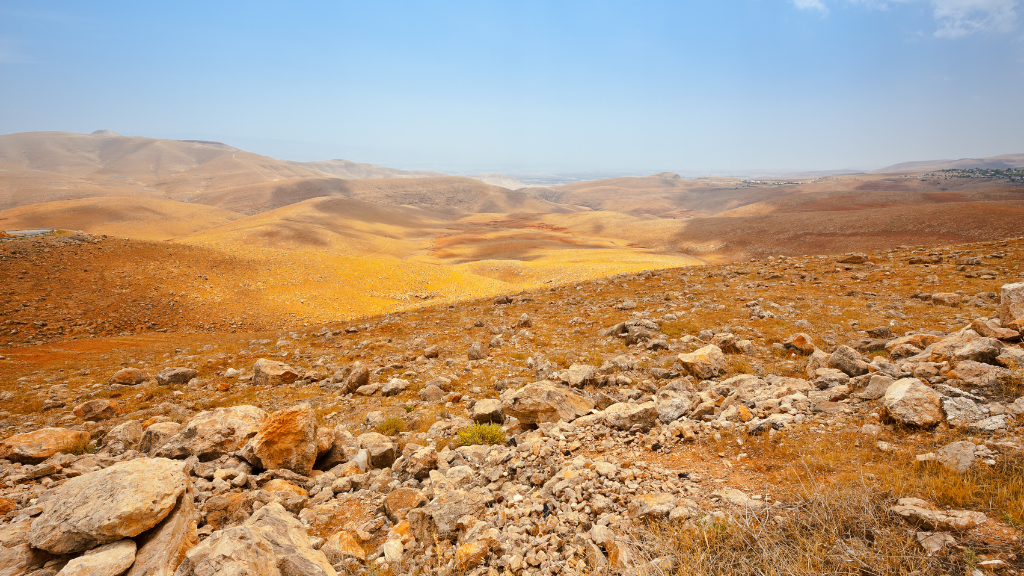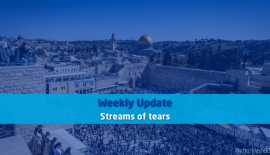The New Iranian Front in Israel’s Heartland
Israel is facing a new Iranian front in Judea and Samaria, the heartland of the Jewish state.
This new front is, in fact, an old one, as Israel has been coping with never relenting Palestinian terror emanating from towns and cities under the control of the Palestinian Authority, ever since the late PLO leader Yasser Arafat was allowed to set up camp in Ramallah.
The current wave of terror that is plaguing Israel started at the end of March 2022 when what then was thought to be ‘lone- wolf’ terrorists staged deadly terror attacks in Israeli cities such as Beer Sheva and Tel Aviv.
The wave of terror attacks resulted in a new comprehensive IDF operation that was dubbed Wave Breaker. This operation focused on the arrest of terrorists in various Palestinian cities and villages, mostly during nightly raids, and on completing Israel’s security fence.
The current wave of terror that is plaguing Israel started at the end of March 2022 when what then was thought to be ‘lone-wolf’ terrorists staged deadly terror attacks in Israeli cities such as
Beer Sheva and Tel Aviv.
Although the Israeli security services said these raids were successful, they did not reduce the number of terror attacks.
The only things that changed were that the terror attacks were more and more carried out in Judea and Samaria with the terrorists increasingly using rifles and other fire weapons in their attempts to murder Israelis.
In contrast to the lone-wolf attacks that marked the first wave of terror last year, the current wave is organised by Hamas and Palestinian Islamic Jihad, a wholly Iran-sponsored terror organisation.
There is even evidence that the lone-wolf attacks were inspired by Iran’s activities on the internet, where the regime created accounts which spread anti-Zionist propaganda and incited the Palestinian masses.
The regime in Tehran is not only sponsoring Palestinian Islamic Jihad (PIJ) but supports Hamas as well. Both Palestinian terror groups have been busy establishing new terror squads in virtually all cities under PA control after receiving instructions from the Iranian regime.
The Iranian leaders openly brag about this new front in Judea and Samaria.
In June, Iranian Supreme Leader Ayatollah Al Khamenei wrote on his Twitter account that “Islamic Jihad and other Palestinian resistance movements have found the main key to fighting the Zionist regime. The continually growing authority of resistance groups in the West Bank is the key to bringing the Zionist enemy to its knees, and this course must be continued.”
Hossein Salami, the commander of the Islamic Revolutionary Guards Corps, furthermore, admitted his organisation had found ways to supply weapons to the terror groups in PA-controlled territory under the noses of the Israeli security services.
The weapons mostly enter Judea and Samaria via the Jordanian border, as the arrest of a Jordanian diplomat with his car full of firearms recently made clear. In another instance, a Jordanian doctor was caught with more than a thousand bullets in the trunk of his car at the beginning of July.
Theft of firearms and other military items from IDF bases is another source for the delivery of weapons to the various terror groups.
After another IDF operation in the town of Jenin which ended up in an hours-long gun battle and saw PIJ using tactics that it had copied from Hezbollah, such as the use of powerful roadside bombs, the political echelon, together with the security brass realised the strategy had to be changed.
As in Gaza, during the last mini-war against PIJ, the Israeli security services had to deliver a devastating blow to the terror groups in Jenin and had to dismantle the terror infrastructure in the town of 49.000.
The decision to change the strategy against the Iranian proxies was no doubt also inspired by what two Palestinian leaders had said about the Iranian build-up in the territories under PA control.
First, there was an anonymous PA official who said that the Iranians “are already here” in the PA-controlled areas.
Then there was a speech by PIJ terror group leader Ziyad al-Nakhalah that made it clear Israel should take decisive action against Iran’s growing influence in the PA- controlled cities.
The Secretary General of PIJ said his group was “establishing battalions of fighters in all Palestinian cities in the West Bank.”
Al-Nakhalah especially praised the Jenin battalion, which had lost many members through IDF actions or terror attacks.
The PIJ leader also revealed that there was close cooperation with Hamas and that some newly established battalions had a mixed PIJ/Hamas cadre.
The terror groups in Samaria and Judea are controlled by the joint Hamas/PIJ war room in Gaza, Nakhalah said, while he also revealed Iran gave instructions to his organisation to form the new terror groups.
During al-Nakhalah’s recent visit to Tehran, he and Hamas leaders had been told by Iran’s leaders that there was a strong need to “better organise and arm the resistance” in Judea and Samaria.
Today, Palestinian terror groups in Israel’s heartland can produce lighter weapons locally, the PIJ leader added.
Shortly after al-Nakhala gave his speech, the IDF, together with the Israeli Border Police and in cooperation with the internal security service Shin Beth began an operation in Jenin that had the hallmarks of the last mini-war against PIJ in Gaza.
The operation, dubbed Bayit VaGan, unexpectedly started with airstrikes carried out by drones against 20 selected targets in Jenin.
Thereafter huge D9 bulldozers sprang into action ploughing through the verges of access roads.
The bulldozers were used to detect and destroy mines and roadside bombs after, during the previous IDF action in Jenin, IDF soldiers were injured when a powerful roadside bomb was detonated under their armoured vehicle.
Thereafter troops entered Jenin, accompanied by airborne fighter jets of the Israeli Air Force that circled in the skies above Jenin.
The IDF soldiers and Border Police knew exactly where the weapon storages and the laboratories that produced weapons and even crude rockets were located, some of them underground.
The Israeli show of force apparently overwhelmed the roughly 300 Palestinian terrorists in Jenin who decided to go into hiding or fled the town.
The Israeli operation may have led to a (temporary) halt of the terror emanating from Jenin but inspired others to step up their attacks elsewhere.
Shortly after the end of the Jenin incursion, rockets were launched at Israel from Gaza and from southern Lebanon as Palestinian terrorists stepped up their attacks against Israelis in both Samaria and Tel Aviv.
It has become clear that the so-called Iranian ‘Resistance Axis’ was not deterred and would continue the war of attrition against Israel in preparation for the long- anticipated multi-front war against Israel.






